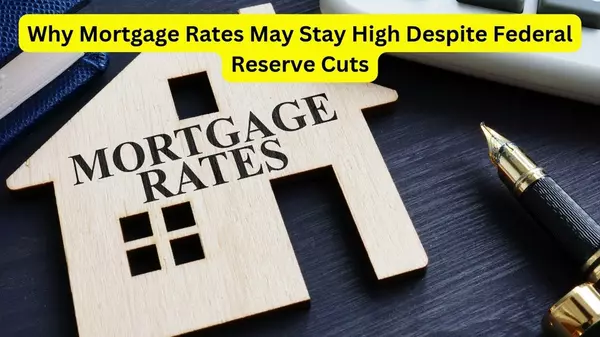Why Mortgage Rates Remain High Despite Recent FED Rate Cuts

Why Mortgage Rates Remain High Despite Recent FED Rate Cuts
11-28-2024
The Federal Reserve's recent moves to cut its benchmark interest rates by 75 basis points over the last few months have sparked a puzzling trend: mortgage rates have barely budged, remaining significantly higher than many expected. While this disconnect may seem confusing, it stems from the dynamics of how mortgage rates are influenced compared to the Federal Reserve's policy actions.
Understanding the Disconnect Between FED Rates and Mortgage Rates
The Federal Reserve's rate cuts primarily impact short-term borrowing costs, such as credit card rates, home equity lines of credit, and some business loans. Mortgage rates, particularly for fixed 30-year loans, are tied more closely to long-term economic indicators, such as the yield on 10-year Treasury bonds. These yields are influenced by factors like inflation expectations, investor sentiment, and overall economic performance.
Recent FED rate cuts have bolstered confidence in the economy, reducing recession fears but also signaling that inflation may persist longer than anticipated. As a result, long-term Treasury yields have remained elevated, which, in turn, has kept mortgage rates high.
Economic Strength and Inflation Expectations
The resilience of the U.S. economy has played a critical role. Employment growth, consumer spending, and stronger-than-expected GDP performance have all created an environment where inflation expectations stay robust. Mortgage rates tend to reflect these broader economic trends, with lenders pricing in the likelihood of higher inflation over the coming years.
Additionally, while the FED’s actions often aim to stimulate borrowing, the real estate market is still digesting the effects of higher rates from earlier in 2023. Many potential buyers and homeowners refinanced during the pandemic when rates were at historic lows, leading to less urgency in the current high-rate environment.
Bond Market Influences
Mortgage rates are closely aligned with the bond market, particularly the 10-year Treasury yield. When investors expect higher long-term inflation, they demand higher yields on bonds to compensate for the erosion of purchasing power. These higher yields translate into increased costs for mortgages. Despite recent rate cuts, the FED's messaging has indicated caution against expecting further aggressive cuts, keeping bond yields elevated.
Outlook for Homebuyers
Although mortgage rates are not expected to return to the historically low levels of 2020-2021 without a significant economic downturn, there are strategies for navigating the current environment. Market analysts suggest that homebuyers focus on affordability rather than attempting to time the market perfectly. As rates stabilize, opportunities for refinancing may emerge, allowing buyers to secure more favorable terms in the future.
Conclusion
While the Federal Reserve’s recent rate cuts reflect its intent to support economic growth, their limited impact on mortgage rates underscores the complex interplay of factors driving long-term interest rates. For prospective buyers and those in the mortgage industry, understanding these dynamics is crucial to making informed decisions in a volatile market.
Categories
Recent Posts




